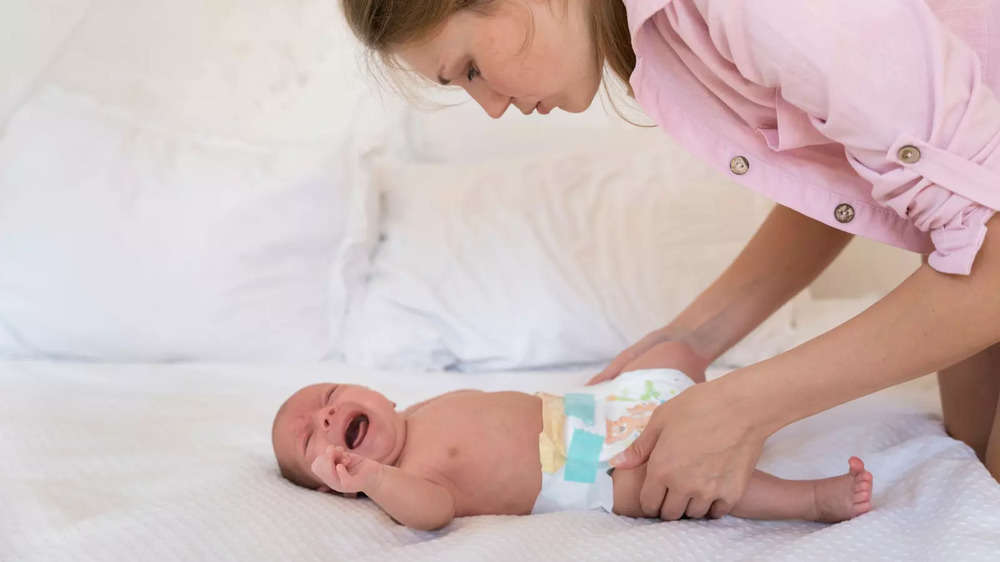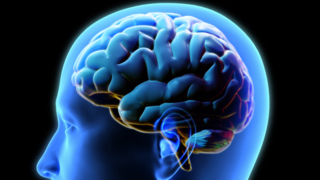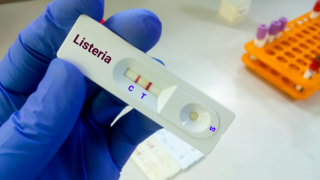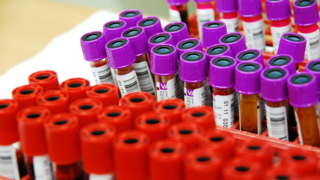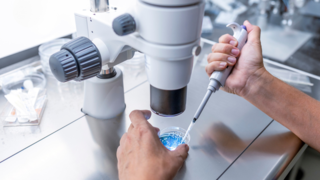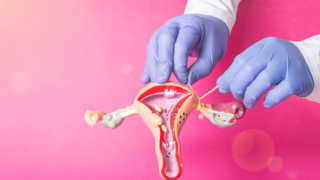In this article:
When digestion proceeds as predicted, nerve cells transmit signals instructing muscles in your colon to tighten and relax. These particular nerve cells are known as neural crest cells. This tensing and relaxing helps waste (poop) pass from the beginning to the end of your gut. Eventually, the waste fills your rectum, which triggers nerves in the lining of your anus (butthole), making you feel the need to defecate.
If your infant has Hirschsprung's disease, excrement travels through the intestines until it reaches the area lacking nerve cells. When the excrement reaches that stage, it either goes slowly or stops (constipation). Hirschsprung's disease may lead to major consequences if not treated properly.
What Are The Symptoms Of Hirschsprung's Disease?
Some newborns with Hirschsprung's disease have obstructed intestines from birth. If your infant fails to defecate within 48 hours after birth, they may have Hirschsprung's disease.
Other indications of Hirschsprung's disease in newborns might include:
- Swollen abdomen
- Constipation
- Vomiting
- Diarrhoea
- Lack of appetite (refusal to eat) and inadequate weight gain
- Delay in growth
What Causes Hirschsprung's Disease?
During foetal development, neural crest cells normally migrate from the small intestine's top to the large intestine's anus. In children with Hirschsprung disease, these nerve cells cease developing in the large intestine before reaching the anus. Healthcare professionals are unsure why this occurs.Hirschsprung's disease is passed down via families in less than 20% of cases. A change in a gene (genetic mutation) might be the reason.
Which Risk Factors Are Connected To Hirschsprung's Disease?
Other risk factors for Hirschsprung's disease include:- Congenital heart disease
- Down Syndrome
What Are The Possible Complications Of Hirschsprung's Disease?
Up to 40% of children with Hirschsprung's disease suffer from enterocolitis. This disease causes enlargement of your child's small and large intestines. Some children have minor irritations. Others have severe, maybe fatal symptoms. If your child develops severe enterocolitis due to Hirschsprung's disease, they may have fever and explosive diarrhoea.Severe or untreated Hirschsprung's disease may cause the following potentially life-threatening problems:
- A big bowel blockage prevents food from going through your baby's large intestine.
- Toxic megacolon: This uncommon, life-threatening illness causes your baby's colon to swell and grow. Gas and excrement cannot pass through their enlarged gut. As pressure builds up in the colon, germs spill into the bloodstream. This may lead to enterocolitis and sepsis, both of which are lethal. In severe situations, your baby's intestine may develop a hole or perforation.
Other difficulties are:
- Accidental pooping
- Diarrhoea
- Fever
- Malnutrition
- Severe constipation
- Swollen abdomen
- Vomiting
How Is Hirschsprung's Disease Diagnosed?
Your baby's healthcare practitioner will examine their abdomen to discover whether it is bloated and sore. Then they will examine your baby's rectum for backed-up excrement.Your child's provider may also provide one or more of the following tests:
- X-ray: Abdominal X-rays may reveal a blockage in your baby's bowel. A contrast enema involves a healthcare practitioner inserting a catheter (a thin tube) into your baby's rectum. The catheter introduces a harmless liquid called contrast into the gut. A technician takes X-rays while the contrast passes through your baby's gut. This check detects obstructions or constrictions in your child's intestines.
- Biopsy: Your baby's healthcare practitioner uses special equipment to remove a tiny bit of tissue (biopsy) from his or her rectum. A pathologist then examines the tissue using a microscope to search for nerve cells. This treatment is painless and does not need anaesthesia.
How Is Hirschsprung's Disease Managed And Treated?
Although there is no cure for Hirschsprung's disease, surgical therapy is typically successful. Hirschsprung's disease may be treated with one of two surgeries: a pull-through surgery or an ostomy.Pull-through procedure
The pull-through operation may be performed by the surgeon using either laparoscopic or standard surgery. The pull-through operation is the most frequent surgery for Hirschsprung's disease and offers the highest chance of recovery.What are the risks and adverse effects of pull-through surgery?
Children with Hirschsprung's illness often feel significantly better shortly after pull-through surgery. However, some children may continue to have issues after they recover, such as:- Accidental pooping (faecal incontinence)
- Constipation
- Inflamed intestines (enterocolitis)
- These issues will be managed by your baby's surgeon and, in certain cases, a gastroenterologist
Ostomy surgery
Ostomy surgery permits excrement to exit your baby's body via a hole (stoma) outside of the anus, often around the belly. Your baby's excrement goes into an ostomy bag that is linked to his or her body.Additional Treatments
Some nonsurgical therapies are effective in addition to surgery. They include:- Bowel management is a program that includes medications and/or enemas to ensure that your child's bowel movements are healthy.
- Sacral nerve stimulation: A surgeon implants a little device near your lower spine to regulate urination and faeces.
- Biofeedback is a kind of therapy in which patients learn ways to gain control over involuntary body activities, such as defecation.
How To Help A Child To Deal With Hirschsprung's Disease?
The following treatments may help your child manage Hirschsprung's illness after surgery:- Nutritional guidance
- Regular treatment from a gastroenterologist and a devoted nurse
- Biofeedback and pelvic floor rehabilitation
- Therapy from a psychologist or social worker
You must closely monitor your child for indications of intestinal obstruction. This period might be particularly difficult when you've recently had a child. It is not uncommon to feel sad or terrified. When you need help, turn to your family and friends. Allow them to do the laundry and assist with household tasks or meals so that you can spend time with your baby or snooze.
FAQs on Hirschsprung's Disease in Infants: What You Need to Know?
- How soon after treatment will my child feel better?
If everything goes well, your child should feel considerably better in a few days following surgery. Although there is no cure for Hirschsprung's disease, surgical therapy is typically successful. Hirschsprung's disease may be treated with one of two surgeries: a pull-through surgery or an ostomy. - When should I contact the doctor about my baby's Hirschsprung's disease?
Children may develop enterocolitis in their intestines after surgery, particularly in the first year. If your child exhibits any of the following symptoms, call the doctor straight once.- They are bleeding from their rectum
- Diarrhoea
- Fever
- Swollen abdomen
- Vomiting

